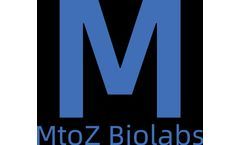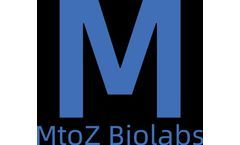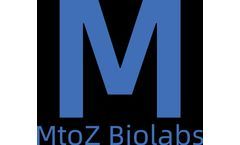Advanced Sequencing Articles & Analysis
75 articles found
The modification of tRNA methylation is essential for controlling the cell cycle in tumor cells. The rapid advancement of high-throughput sequencing technology has enabled scientists to identify and report numerous tRNA methylation modifications and their modifying enzymes which control cell cycle regulation. ...
This approach provides a broader genomic view than targeted bisulfite sequencing while requiring significantly less sequencing depth. Forensic Fragment Analysis In forensic applications, HindII generates highly discriminative restriction fragment length polymorphisms from genomic DNA. ...
This approach provides a broader genomic view than targeted bisulfite sequencing while requiring significantly less sequencing depth. Forensic Fragment Analysis In forensic applications, HindII generates highly discriminative restriction fragment length polymorphisms from genomic DNA. ...
Among these advancements, dual RNA sequencing (dual RNA-seq) stands out as a groundbreaking technique that facilitates simultaneous transcriptomic analysis of both the host and the pathogen during infection. ...
The advent of next-generation sequencing (NGS) has revolutionized the field of microbiome research, particularly through the analysis of 16S rRNA gene sequencing. ...
Next-Generation Sequencing (NGS) has revolutionized genomics, providing unprecedented insights into the structure and function of genomes, transcriptomes, and epigenomes. A critical step in the NGS workflow is library preparation, which involves converting DNA or RNA samples into a form that can be sequenced. NGS Library Preparation Kits play a pivotal role in this process, ensuring high-quality ...
Within the rapidly advancing realm of biotechnology, zebrafish genome editing services are carving a niche, heralding a new epoch in genomics and cellular research. ...
Submission of sequence data to NCBI archives Next-generation sequencing, PacBio SMRT sequencing, and Nanopore sequencing, can generate numerous sequence data in a single run. Raw reads or assembled sequence need to be submitted to public sequence repository (DDBJ/ENA/GenBank - INSDC), which is required by the overwhelming majority of journals as accession numbers of theses sequence data should ...
Since the year 2000, the advent of massively parallel sequencing technologies has orchestrated a revolution in high-throughput sequencing capabilities. Critical breakthroughs, including pyrophosphate sequencing, reversible terminator chemical sequencing, and supported oligonucleotide ligation and sequencing, have ...
When a ribosome is affixed to the polypeptide (protein) it is making, the ribosome-nascent chain complex (RNC) is the compilation of molecules that make up the ribosome. One of several methods can be used to halt the synthesis of the nascent polypeptide. RNCs are made and purified in labs to study the dynamics, biochemistry, folding, and interactions that the ribosome and proteins undergoing ...
The backbone of clonality analysis is DNA and RNA sequencing, the most precise methods of determining the genetic makeup of cells. Through techniques such as next-generation sequencing (NGS), researchers can analyze huge volumes of genetic data, enabling the detection of even slight genetic variations among clones. ...
However, traditional methods of antibody discovery require substantial time and effort and often fail to identify the most effective antibodies. In recent years, the advancement of single-cell sequencing technologies has offered a new possibility for the screening of antibodies.What is Single-Cell Sequencing?Single-cell ...
Also, Protein-Protein Interaction Sequencing can be applied to drug target screening and effectiveness evaluation. ...
ESMO updated its recommendations for NGS in advanced cancers this year, urging broader use of NGS in additional cancer types and the inclusion of tumor-agnostic biomarkers. The ESMO Precision Medicine Working Group (PMWG) first published its recommendations for when to use next-generation sequencing (NGS) in routine practice for patients with metastatic ...
Proteins, peptides, and antibodies are important molecules in the body and are important objects of research in biopharmaceuticals and personalized medicine. With the continuous advancement of protein, peptide, and antibody sequencing technology, they are playing an increasingly important role in the medical field.Precision Medicine and Targeted TherapyThrough ...
Accordingly, we can take measures to avoid such risks in advance. At the same time, antibody sequencing can also help us evaluate the therapeutic effect and mechanism of antibodies, providing strong support for clinical trials and marketing applications of drugs. ...
Dr. Kate Sasser from Tempus led a discussion on the potential of antibody-drug conjugates (ADCs), their challenges in targeting tumor antigens, and the future of cancer treatment with Dr. Daniel Johnson, Dr. Funda Meric-Bernstam, and Dr. Kellogg Parsons. The oncology field is rapidly advancing with the development of antibody-drug conjugates (ADCs), offering new hope for ...
ByTempus
Introduction to Variant Analysis Rare DNA changes within a population of cells are the first manifestations of mutations, which are the fuel for evolution. The research of genomic variation between species and individual organisms has been revolutionized by next-generation sequencing (NGS) technologies. Variant detection and analysis refer to the sequencing and difference analysis of a genome ...
Rare diseases, also known as orphan diseases, affect a small percentage of the population, making them particularly challenging to diagnose and treat. However, thanks to advancements in medical research and technology, significant progress has been made in the field of rare disease research, from developing accurate diagnostic tools to making effective small-molecule drugs. ...
Karyotype analysis refers to the pairing and grouping of chromosomes to reveal whether the organism accords with the inherent chromosomal characteristics, to determine if the organism has chromosomal abnormalities. Karyotype analysis can detect whether there are abnormalities in chromatin length, centromere position, the ratio of long and short arms, and the presence or absence of satellites. ...












